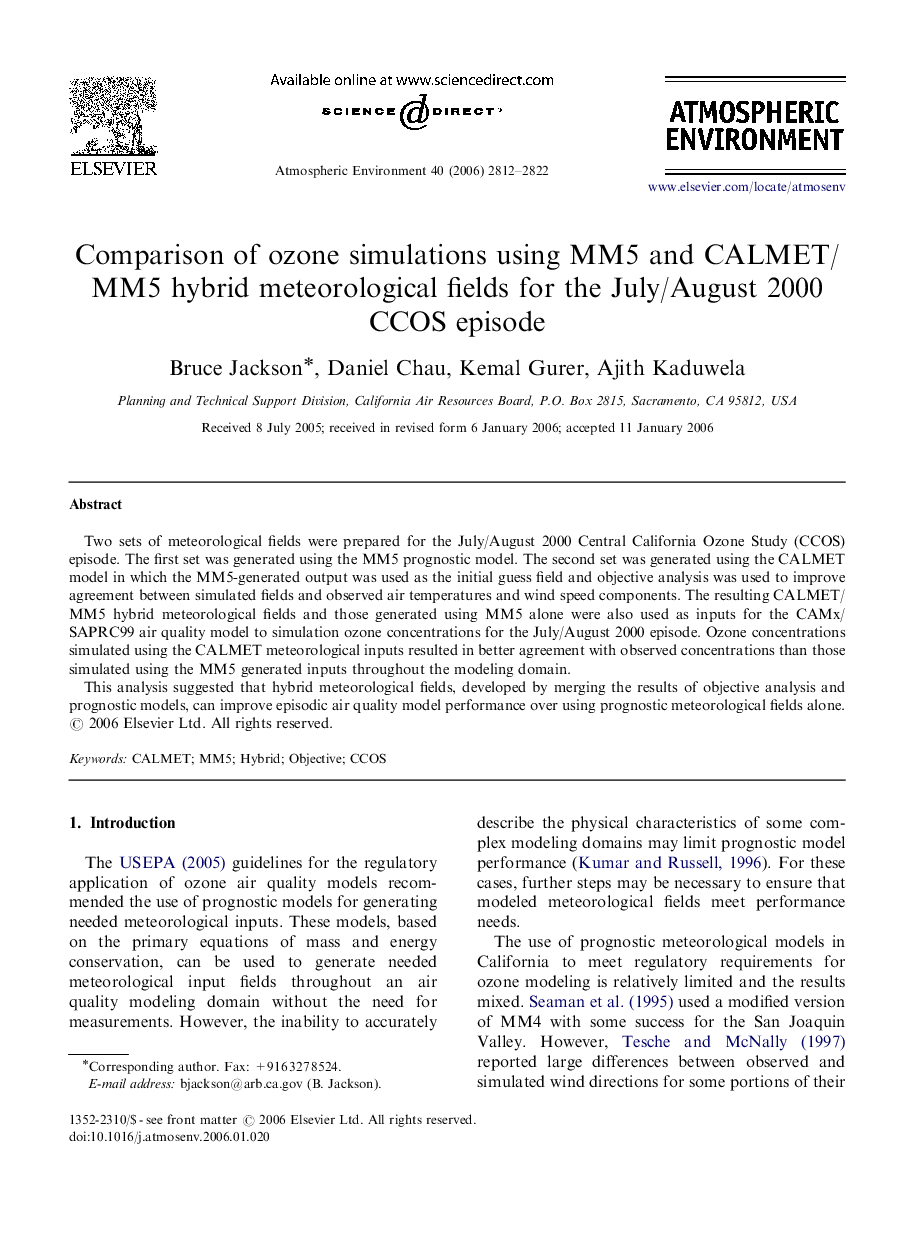| Article ID | Journal | Published Year | Pages | File Type |
|---|---|---|---|---|
| 4444894 | Atmospheric Environment | 2006 | 11 Pages |
Two sets of meteorological fields were prepared for the July/August 2000 Central California Ozone Study (CCOS) episode. The first set was generated using the MM5 prognostic model. The second set was generated using the CALMET model in which the MM5-generated output was used as the initial guess field and objective analysis was used to improve agreement between simulated fields and observed air temperatures and wind speed components. The resulting CALMET/MM5 hybrid meteorological fields and those generated using MM5 alone were also used as inputs for the CAMx/SAPRC99 air quality model to simulation ozone concentrations for the July/August 2000 episode. Ozone concentrations simulated using the CALMET meteorological inputs resulted in better agreement with observed concentrations than those simulated using the MM5 generated inputs throughout the modeling domain.This analysis suggested that hybrid meteorological fields, developed by merging the results of objective analysis and prognostic models, can improve episodic air quality model performance over using prognostic meteorological fields alone.
